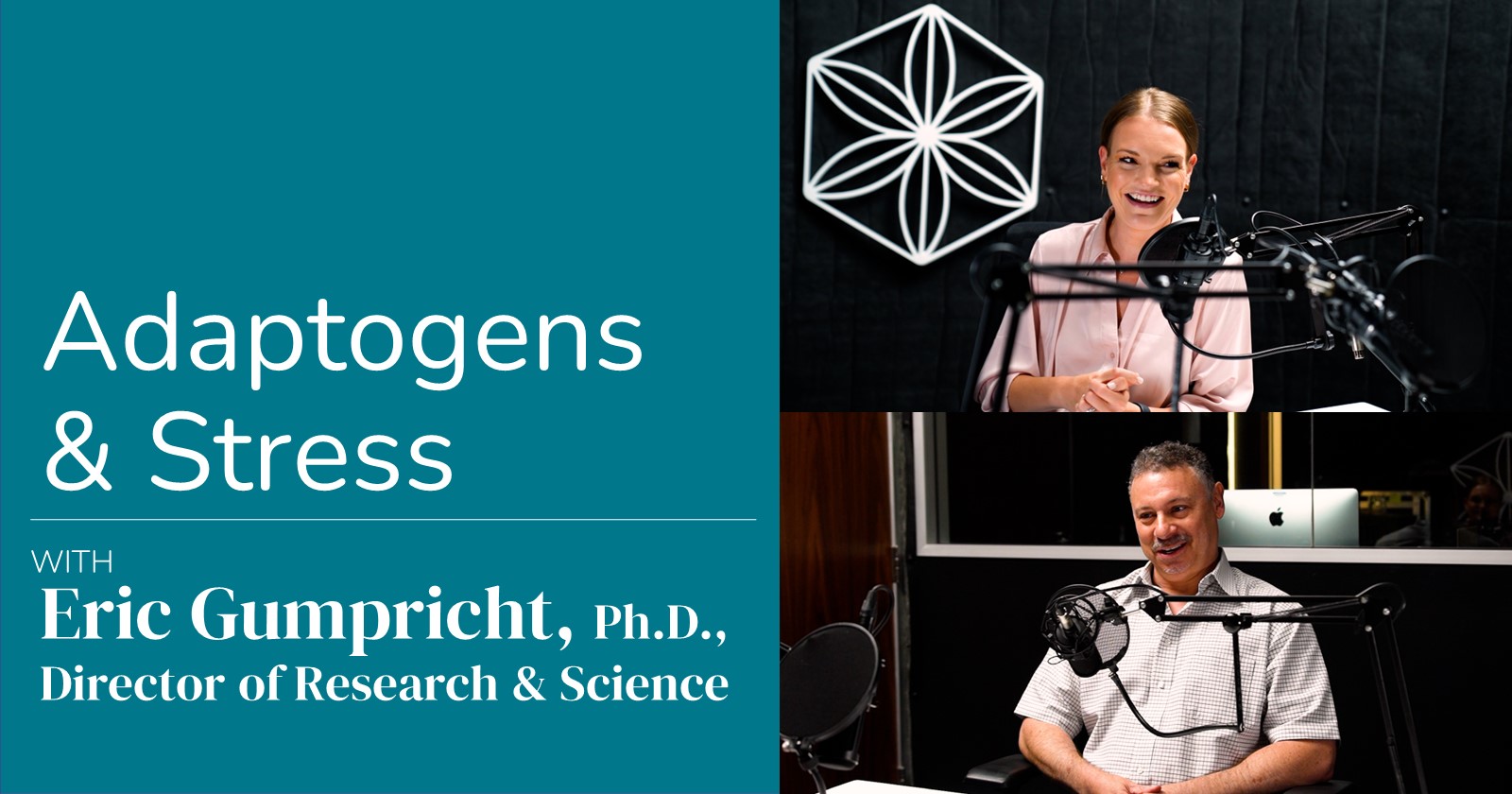One of the principal findings of clinical studies around intermittent fasting with Isagenix-style Cleanse Days is that it can be an efficient method to accelerate fat loss and improve health markers (1-3). However, especially for the physically active on a weight-reduction program, a common concern is the decreased intake of calories that could lead to problems with maintaining or building muscle.
Muscle is in a constant state of build up and break down in a process called protein turnover (4;5). Building muscle is controlled largely by a cellular mechanism called mTORC1. How much energy (calories) is consumed and the level of protein intake affect mTORC1 and ultimately the amount of muscle a person has (6;7). Reducing food intake or fasting can potentially reduce mTORC1 signaling and halt muscle building (8).
What may come as a surprise to some is that during times of increased energy demand or reduced food intake, protein requirements are increased above what the Institute of Medicine recommends. In fact, it’s now recommended that physically active individuals eat 1.2 to 1.7 grams of protein per kilogram of bodyweight per day (9). For those who are in an energy deficit and/or are physically active, protein intake above the recommended dietary allowance protects muscle.
It’s no wonder multiple studies have demonstrated that consuming more protein over the recommended dietary allowance (RDA) spares muscle regardless of body size (10-12). When total daily protein intake is in line with the RDA and combined with reduced energy intake, muscle building is blunted even with an optimal serving of high-quality protein like whey (9).
The Solution…
Consuming protein either alone or in a meal promotes a significant increase in building up proteins in muscle (13;14). This is caused by increases in insulin secretion and the amino acids, the building blocks of protein (15;16). To cause the most profound effect on protein synthesis, the protein source should be high in quality, meaning that it contains high levels of branched-chain amino acids, specifically leucine (17). Lower-quality proteins with lower amounts of leucine may not be as effective (18). Whey is one of the richest sources of leucine, which is the most critical amino acid for muscle synthesis (9).
Moreover, in times of decreased energy and after a fast, eating two to three times the recommended dietary allowance for protein spares muscle and can stimulate muscle synthesis (9). So while taking in the right type of protein is important, so is taking in the right amount.
What to do…
The day after a Cleanse Day should be started with an IsaLean® Shake or an IsaLean® Pro Shake since consuming at least a 20 to 25 gram serving of high-quality protein like whey maximally stimulates muscle synthesis for a few hours (10).
Older individuals should consume more total protein since a higher amount can increase mTORC1 signaling and reduce muscle wasting from age-related anabolic resistance (12). They may have more benefit in using the IsaLean® Pro with a higher protein content. Two shakes and other protein-rich meals should be consumed throughout the day to ensure 1.2 to 1.7 grams of protein per kilogram of body weight per day (9). An example for a 200-pound man and a 150-pound woman would be 154 grams and 115 grams of protein, respectively.
By using these high-quality whey protein products and boosting protein intake, Isagenix customers can enjoy the benefits of improved body composition—as in more lean muscle, less body fat—in addition to all the health benefits of Cleanse Days.
References
- Anson RM, Guo Z, de Cabo R et al. Intermittent fasting dissociates beneficial effects of dietary restriction on glucose metabolism and neuronal resistance to injury from calorie intake. Proceedings of the National Academy of Sciences 2003;100:6216-20.
- Mattson MP, Wan R. Beneficial effects of intermittent fasting and caloric restriction on the cardiovascular and cerebrovascular systems. The Journal of nutritional biochemistry 2005;16:129-37.
- Kroeger CM, Klempel MC, Bhutani S, Trepanowski JF, Tangney CC, Varady KA. Improvement in coronary heart disease risk factors during an intermittent fasting/calorie restriction regimen: Relationship to adipokine modulations. Nutr Metab (Lond) 2012;9:98.
- Pasiakos SM. Exercise and amino acid anabolic cell signaling and the regulation of skeletal muscle mass. Nutrients 2012;4:740-58.
- Pasiakos SM, Carbone JW. Assessment of skeletal muscle proteolysis and the regulatory response to nutrition and exercise. IUBMB life 2014;66:478-84.
- Proud CG. mTOR, unleashed. SCIENCE-NEW YORK THEN WASHINGTON- 2007;318:926.
- Proud CG. Amino acids and mTOR signalling in anabolic function. Biochemical Society Transactions 2007;35:1187-90.
- Bolster DR, Crozier SJ, Kimball SR, Jefferson LS. AMP-activated protein kinase suppresses protein synthesis in rat skeletal muscle through down-regulated mammalian target of rapamycin (mTOR) signaling. Journal of Biological Chemistry 2002;277:23977-80.
- Atherton PJ, Etheridge T, Watt PW et al. Muscle full effect after oral protein: time-dependent concordance and discordance between human muscle protein synthesis and mTORC1 signaling. The American journal of clinical nutrition 2010;92:1080-8.
- Boh+¬ J, Low JA, Wolfe RR, Rennie MJ. Latency and duration of stimulation of human muscle protein synthesis during continuous infusion of amino acids. The Journal of physiology 2001;532:575-9.
- Wolfe RR, Miller SL. Amino acid availability controls muscle protein metabolism. Diabetes, nutrition & metabolism 1999;12:322-8.
- Floyd JC, Fajans SS, Pek S, Thiffault CA, Knopf RF, Conn JW. Synergistic effect of essential amino acids and glucose upon insulin secretion in man. Diabetes 1970;19:109-15.
- Kim E, Goraksha-Hicks P, Li L, Neufeld TP, Guan KL. Regulation of TORC1 by Rag GTPases in nutrient response. Nature cell biology 2008;10:935-45.
- Norton LE, Wilson GJ, Layman DK, Moulton CJ, Garlick PJ. Leucine content of dietary proteins is a determinant of postprandial skeletal muscle protein synthesis in adult rats. Nutr Metab 2012;9:67.
- Tang JE, Moore DR, Kujbida GW, Tarnopolsky MA, Phillips SM. Ingestion of whey hydrolysate, casein, or soy protein isolate: effects on mixed muscle protein synthesis at rest and following resistance exercise in young men. Journal of Applied Physiology 2009;107:987-92.
- Moore DR, Robinson MJ, Fry JL et al. Ingested protein dose response of muscle and albumin protein synthesis after resistance exercise in young men. The American journal of clinical nutrition 2009;89:161-8.
- Cuthbertson D, Smith K, Babraj J et al. Anabolic signaling deficits underlie amino acid resistance of wasting, aging muscle. The FASEB Journal 2005;19:422-4.
- Katsanos CS, Kobayashi H, Sheffield-Moore M, Aarsland A, Wolfe RR. A high proportion of leucine is required for optimal stimulation of the rate of muscle protein synthesis by essential amino acids in the elderly. American Journal of Physiology-Endocrinology And Metabolism 2006;291:E381-E387.





